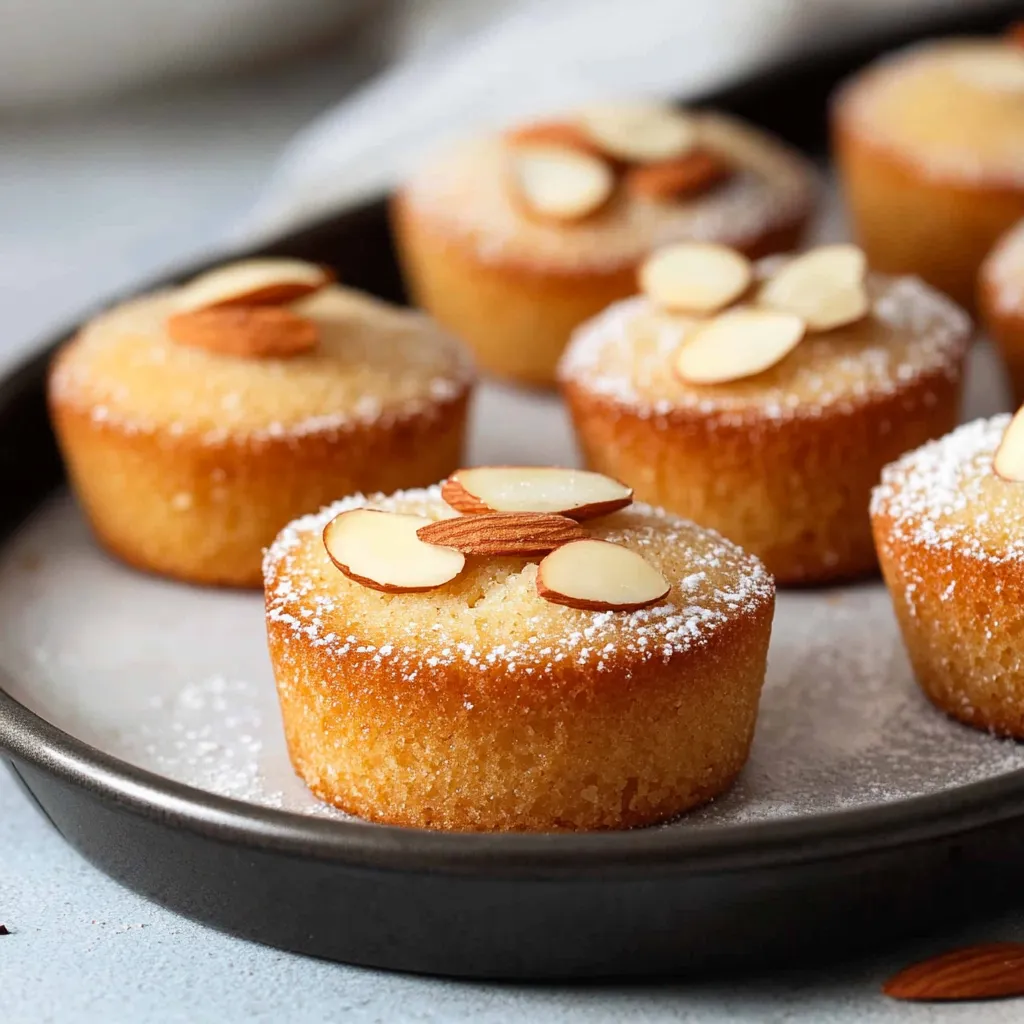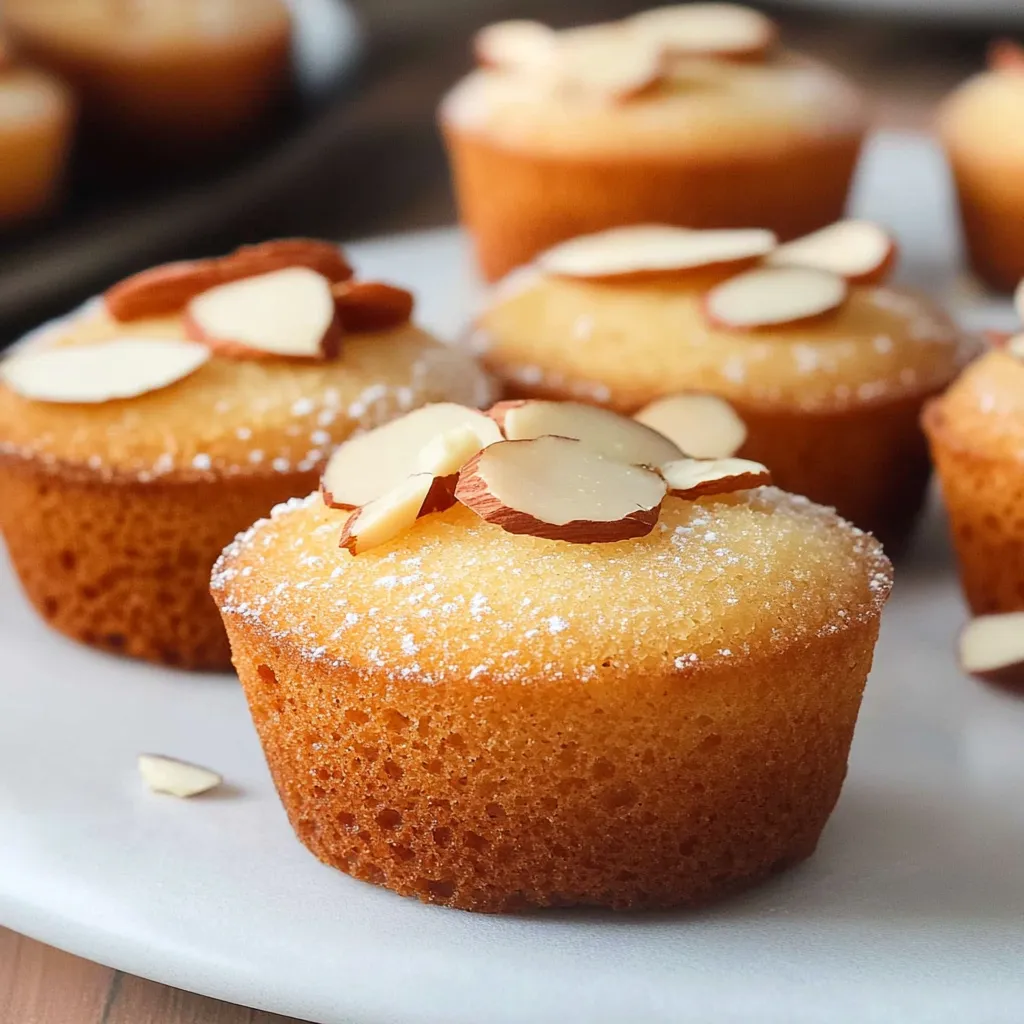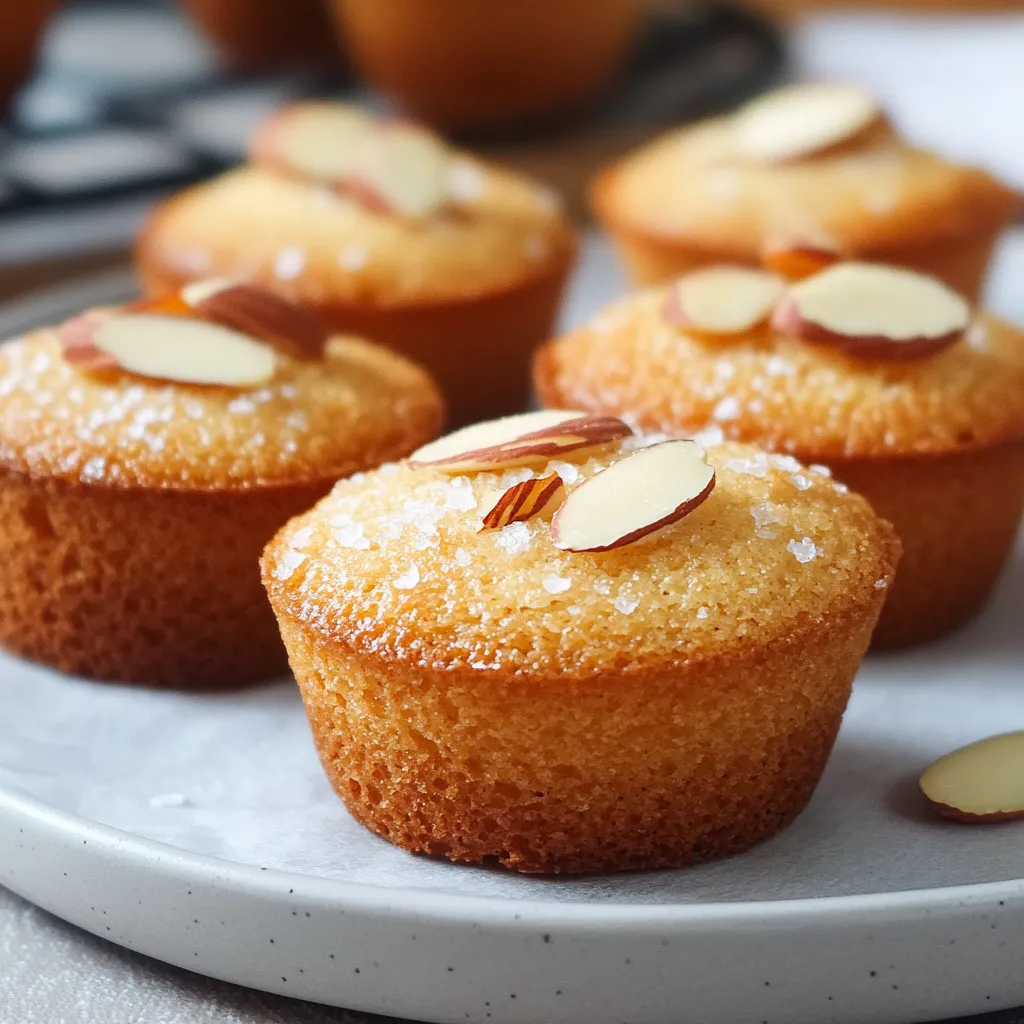 Pin it
Pin it
This buttery French financier recipe transforms simple ingredients into elegant little almond cakes that will impress anyone lucky enough to try them. Traditionally served in gold bar shapes, these rich treats feature the nutty depth of brown butter that elevates them far beyond ordinary tea cakes.
I discovered financiers during a pastry workshop in Paris and have been perfecting this recipe ever since. What began as a technical challenge has become my signature offering whenever friends visit for afternoon tea.
Ingredients
- Unsalted Butter: Transforms into magical brown butter, giving these cakes their distinctive nutty flavor. Look for European style with higher fat content.
- Plain All-Purpose Flour: Provides just enough structure while keeping the cakes tender.
- Almond Meal: Creates the delicate melt-in-your-mouth texture that defines financiers. Freshly ground works best.
- Icing Sugar: Also called powdered sugar, dissolves seamlessly into the batter ensuring a fine crumb.
- Egg Whites: Deliver moisture and structure without the heaviness egg yolks would bring.
- Vanilla Extract: Enhances the almond and brown butter notes. Optional but recommended.
- Flaked Almonds: Add beautiful visual appeal and textural contrast to the tops.
Step-by-Step Instructions
- Prepare Your Pan:
- Preheat your oven to 160°C/325°F. Generously butter your financier molds, taking care to get into all corners and crevices. For extra insurance against sticking, dust lightly with flour, tapping out any excess. The traditional molds are rectangular, but mini muffin tins work perfectly too.
- Brown Your Butter:
- This step creates the magic. Place butter in a small saucepan over medium-low heat. As it melts, it will begin to foam. Continue cooking, occasionally stirring, until the milk solids separate and sink to the bottom. Watch carefully as they turn golden brown and release a nutty aroma. Look for tiny brown specks at the bottom of the pan, then immediately remove from heat to prevent burning. Set aside to cool slightly.
- Mix Dry Ingredients:
- In a large mixing bowl, sift together the flour, almond meal, icing sugar, and salt. Sifting is important to remove any lumps in the almond meal and sugar, ensuring your financiers have a perfectly smooth texture. Whisk these ingredients together to distribute evenly.
- Prepare Egg Whites:
- In a separate bowl, lightly whisk the egg whites until just slightly frothy. Unlike meringue, you don't want to incorporate air or structure here, just break them up enough to incorporate easily into your batter.
- Combine Wet and Dry:
- Pour your slightly frothy egg whites into the dry ingredient mixture and stir until smooth. The batter will be quite thick at this stage. Next, add your cooled brown butter and vanilla extract, folding gently until just combined. Take care not to overmix, which could develop gluten and toughen your delicate cakes.
- Fill Your Molds:
- Transfer the batter to a piping bag for the neatest presentation, or simply use a spoon if you prefer. Fill each mold about three-quarters full to allow for some rising. Smooth the tops with the back of a spoon if needed, then sprinkle with flaked almonds.
 Pin it
Pin it
My favorite moment with these cakes was watching my French grandmother taste them with skepticism, then break into a wide smile of approval. She later confessed they rivaled those from her favorite Parisian patisserie, a compliment I still treasure years later.
The Magic of Brown Butter
The brown butter or beurre noisette is what sets financiers apart from other small cakes. This technique transforms ordinary butter into a complex, nutty ingredient that perfumes the entire kitchen. Watch your butter carefully during this process as it can quickly go from perfectly brown to burnt. The visual cues are important: look for a golden amber color and tiny brown flecks. The aroma will shift from buttery to distinctly nutty, almost like hazelnuts or toasted almonds. This step alone elevates these humble ingredients into something truly special.
Storage and Freshness
Financiers actually improve with a day of rest as the moisture distributes evenly throughout the cakes. Store them in an airtight container at room temperature for up to 5 days. The crisp exterior will soften slightly, but the flavor continues to develop beautifully. To refresh them, place in a 300°F oven for 5 minutes before serving. Their compact size and sturdy texture make them excellent candidates for gifting or packing in lunches too.
Historical Context
Financiers originated in the financial district of Paris in the late 19th century. The traditional rectangular shape resembles gold bars, giving them their name. Pastry chef Lasne created them for busy bankers who wanted a treat they could enjoy without messing their suits with crumbs or sticky fingers. The recipe cleverly used only egg whites, which were abundant as yolks were used for other pastries, making it economically efficient for bakeries. Today, they remain a staple in French patisseries but are still surprisingly uncommon outside of France.
 Pin it
Pin it
Serve these decadent little cakes with a hot cup of tea or coffee, and let their buttery, nutty flavor transport you to a Parisian patisserie.
Frequently Asked Questions
- → What gives financiers their distinctive flavor?
Financiers get their distinctive nutty flavor from two key ingredients: brown butter (beurre noisette) and almond meal. The brown butter is cooked until it develops golden brown milk solids and a rich, nutty aroma. This process transforms the flavor profile completely compared to using regular melted butter.
- → What's the proper texture of a well-made financier?
A perfectly made financier has a slightly crisp exterior with a tender, moist interior. They should not be overly dense or cake-like, but rather have a delicate, springy texture that's somewhat between a cake and a cookie. The almond meal contributes to their distinctive texture.
- → Can I make financiers without a specialized pan?
Absolutely! While traditional financiers have a rectangular shape resembling gold bars (hence their name, relating to finances), you can bake them in mini muffin tins, small tart molds, or even regular muffin tins for larger cakes. The specialized financier molds are nice but not essential.
- → Why do financiers use only egg whites?
Financiers use only egg whites because this creates their characteristic light texture. The whites provide structure without the richness of the yolks, allowing the nutty flavors of brown butter and almond to shine. Using just whites also gives them their pale, delicate color and helps create that slight crust on the exterior.
- → How long do homemade financiers stay fresh?
Homemade financiers stay fresh for about 3-4 days when stored in an airtight container at room temperature. They actually develop more flavor after the first day as the brown butter notes intensify. For longer storage, they can be frozen for up to a month and thawed at room temperature before serving.
- → Can I add other flavors to the basic financier recipe?
Yes, financiers are wonderfully adaptable! Common variations include adding citrus zest (lemon or orange), folding in fresh berries, incorporating spices like cardamom or cinnamon, or even adding a touch of matcha powder. You can also drizzle them with a simple glaze or dip them partially in chocolate after baking.
